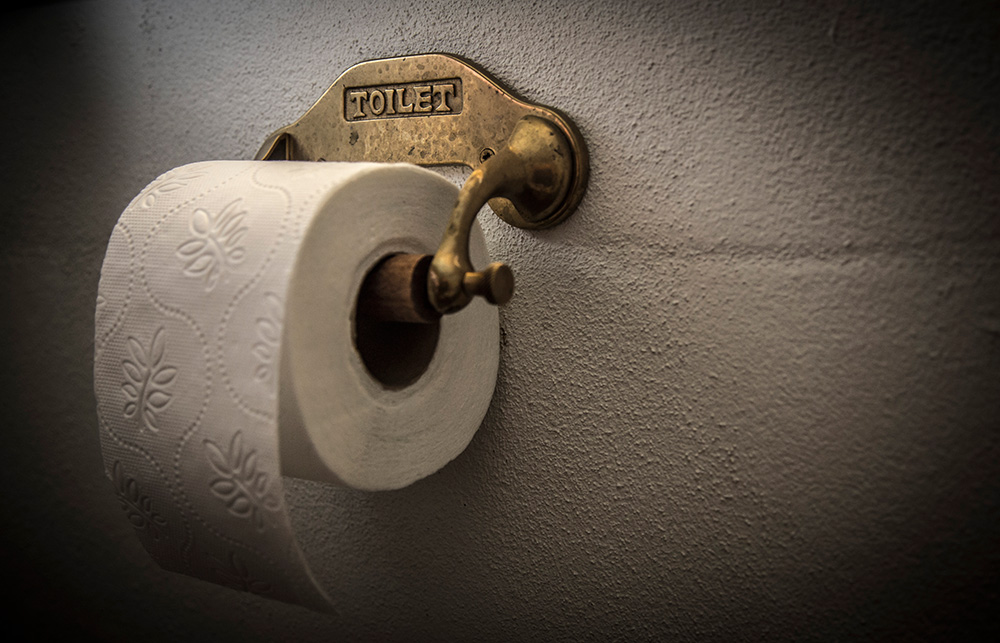如今,,美國人整日在家,就連廁所里的衛(wèi)生紙花銷都比平時多出了不少,。這對我們的環(huán)境而言,,其實是個壞消息。
根據(jù)美國自然資源保護(hù)委員會(NRDC)提供的信息,,那些在疫情爆發(fā)前期就被哄搶一空的家庭軟廁紙主要來源于森林原木,,是不可再生的,而那些辦公樓里的公用廁紙往往是由纖維制成的,,是可再生的,。
“疫情帶來的負(fù)面影響正在催生出另一個(環(huán)境)危機(jī),這是不應(yīng)該的,?!弊匀毁Y源保護(hù)委員會的環(huán)境專家謝莉?維亞德說道。上周三,,該委員會發(fā)布了一份關(guān)于“廁紙對于氣候的影響”的報告,,著力于討論廁紙用量和環(huán)境變化之間的微妙關(guān)系。維亞德說:“為什么家庭廁紙一定要用原木,,而辦公用紙卻可以用再生纖維呢?這也是說不通的?!?

目前,,美國60%的家庭“原木型”衛(wèi)生紙源自加拿大北部的森林。多年來,,美國自然資源保護(hù)委員會一直都在強(qiáng)調(diào)非再生紙巾對于環(huán)境的不良影響,。
在最新的研究中,該委員會還根據(jù)不同產(chǎn)品對環(huán)境產(chǎn)生的不同影響給各大企業(yè)進(jìn)行了打分,。寶潔,、佐治亞太平洋、金佰利,,這三大美國衛(wèi)生紙生產(chǎn)商都被其歸類為F檔,。
對此,寶潔和佐治亞太平洋兩家公司也做出了解釋,。寶潔公司在郵件中表示,,其廣受歡迎的Charmin牌衛(wèi)生紙的產(chǎn)原地是受到特殊管理的,公司每砍伐一棵樹就會相應(yīng)種下另一顆樹,。佐治亞太平洋公司的發(fā)言人則稱,,公司之前已經(jīng)就環(huán)境問題制定過一份聲明,并在聲明中承諾了公司“可持續(xù)發(fā)展”的原則,,他還特意強(qiáng)調(diào)了佐治亞太平洋公司在加拿大地區(qū)所制定的相關(guān)環(huán)境保護(hù)條例,。
“復(fù)雜的挑戰(zhàn)”
在金佰利方面,該公司的發(fā)言人特里?巴雷拉克說:“我們完全理解美國自然資源保護(hù)委員會的立場,,我們會繼續(xù)與他們保持對話,,共同討論報告中所指出的復(fù)雜挑戰(zhàn)?!彼€指出,,金佰利正在減產(chǎn)原木型的衛(wèi)生紙,到2025年,,公司計劃將這種衛(wèi)生紙的占比減少至原來的50%,。
“如果過分依賴原木材料,我們就會觸發(fā)‘潘多拉’魔盒的開關(guān),,最終導(dǎo)致過量的碳排放,。”自然資源委員會的另一位環(huán)境專家詹妮弗?斯基恩說道,。正是她和維亞德一起,,合著了該委員會在上周三發(fā)布的報告。該報告估計,,每一年,,加拿大北部森林地區(qū)(從育空延伸到紐芬蘭)的伐木活動都會額外產(chǎn)生大約2600萬公噸的二氧化碳,,這就相當(dāng)于550萬輛客車在一年中的排放量了。
由于衛(wèi)生紙的需求量是造紙業(yè)中增長得最快的一個板塊,,所以美國自然資源委員會預(yù)測,,未來幾年,企業(yè)對原木衛(wèi)生紙的投資還會繼續(xù),。(財富中文網(wǎng))
編譯:陳怡軒
如今,,美國人整日在家,就連廁所里的衛(wèi)生紙花銷都比平時多出了不少,。這對我們的環(huán)境而言,,其實是個壞消息。
根據(jù)美國自然資源保護(hù)委員會(NRDC)提供的信息,,那些在疫情爆發(fā)前期就被哄搶一空的家庭軟廁紙主要來源于森林原木,,是不可再生的,而那些辦公樓里的公用廁紙往往是由纖維制成的,,是可再生的,。
“疫情帶來的負(fù)面影響正在催生出另一個(環(huán)境)危機(jī),這是不應(yīng)該的,?!弊匀毁Y源保護(hù)委員會的環(huán)境專家謝莉?維亞德說道。上周三,,該委員會發(fā)布了一份關(guān)于“廁紙對于氣候的影響”的報告,,著力于討論廁紙用量和環(huán)境變化之間的微妙關(guān)系。維亞德說:“為什么家庭廁紙一定要用原木,,而辦公用紙卻可以用再生纖維呢,?這也是說不通的?!?
目前,,美國60%的家庭“原木型”衛(wèi)生紙源自加拿大北部的森林。多年來,,美國自然資源保護(hù)委員會一直都在強(qiáng)調(diào)非再生紙巾對于環(huán)境的不良影響,。
在最新的研究中,該委員會還根據(jù)不同產(chǎn)品對環(huán)境產(chǎn)生的不同影響給各大企業(yè)進(jìn)行了打分,。寶潔,、佐治亞太平洋、金佰利,,這三大美國衛(wèi)生紙生產(chǎn)商都被其歸類為F檔,。
對此,寶潔和佐治亞太平洋兩家公司也做出了解釋,。寶潔公司在郵件中表示,,其廣受歡迎的Charmin牌衛(wèi)生紙的產(chǎn)原地是受到特殊管理的,,公司每砍伐一棵樹就會相應(yīng)種下另一顆樹。佐治亞太平洋公司的發(fā)言人則稱,,公司之前已經(jīng)就環(huán)境問題制定過一份聲明,,并在聲明中承諾了公司“可持續(xù)發(fā)展”的原則,他還特意強(qiáng)調(diào)了佐治亞太平洋公司在加拿大地區(qū)所制定的相關(guān)環(huán)境保護(hù)條例,。
“復(fù)雜的挑戰(zhàn)”
在金佰利方面,該公司的發(fā)言人特里?巴雷拉克說:“我們完全理解美國自然資源保護(hù)委員會的立場,,我們會繼續(xù)與他們保持對話,,共同討論報告中所指出的復(fù)雜挑戰(zhàn)?!彼€指出,,金佰利正在減產(chǎn)原木型的衛(wèi)生紙,到2025年,,公司計劃將這種衛(wèi)生紙的占比減少至原來的50%,。
“如果過分依賴原木材料,我們就會觸發(fā)‘潘多拉’魔盒的開關(guān),,最終導(dǎo)致過量的碳排放,。”自然資源委員會的另一位環(huán)境專家詹妮弗?斯基恩說道,。正是她和維亞德一起,,合著了該委員會在上周三發(fā)布的報告。該報告估計,,每一年,,加拿大北部森林地區(qū)(從育空延伸到紐芬蘭)的伐木活動都會額外產(chǎn)生大約2600萬公噸的二氧化碳,這就相當(dāng)于550萬輛客車在一年中的排放量了,。
由于衛(wèi)生紙的需求量是造紙業(yè)中增長得最快的一個板塊,,所以美國自然資源委員會預(yù)測,未來幾年,,企業(yè)對原木衛(wèi)生紙的投資還會繼續(xù),。(財富中文網(wǎng))
編譯:陳怡軒
With Americans spending a lot of time at home these days, more money is being spent on soft toilet paper. That may be bad news for the environment.
The kind of cushy tissue that was sold out earlier in the pandemic uses material that comes primarily from clear-cutting forests, according to the Natural Resources Defense Council. Office buildings, on the other hand, tend to use recycled fibers in their toilet paper, the group said.
“The side-effect of one crisis shouldn’t exacerbate another,” said Shelley Vinyard, an environment expert with the NRDC, which released a report last Wednesday on the climate impact of toilet paper. “There’s no real reason why office tissue has to be made with recycled and the consumer tissue has to be made with virgin fiber.”
Nearly 60% of at-home toilet paper in the U.S. comes from so-called virgin material, which is sourced from Canada’s northern forests. The NRDC for years has highlighted the impact of tissue that uses non-recycled content.
In the latest study, the group handed out F grades to brands from Procter & Gamble Co., Georgia-Pacific, and Kimberly-Clark Corp.—the three largest U.S. manufacturers of toilet paper—for the environmental impact of their products.
P&G said via email that its popular Charmin brand is “sourced from responsibly-managed forests,” and that at least one tree is regrown for every one the company uses. A Georgia-Pacific representative referred to an earlier statement that said the company is committed to sustainability and that Canada in particular has regulations in place to help minimize the risk of deforestation.
“Complex challenges”
Kimberly-Clark has committed to reducing the use of virgin wood fiber from natural forests in its tissue products by 50% by 2025, said Terry Balluck, a company spokesperson. “We understand the point of view of the NRDC, and we remain committed to the ongoing dialogue with them on the complex challenges presented in their report.”
The heavy reliance on virgin fibers is releasing an “enormous Pandora’s box” of carbon emissions, said Jennifer Skene, a co-author of the NRDC report along with Vinyard. Logging in the Canadian boreal forests region, which stretches from the Yukon to Newfoundland, emits 26 million metric tons every year, the report estimates, an amount which is equivalent to the emissions produced by 5.5 million passenger vehicles.
As tissue remains one of the fastest-growing sectors in the paper industry, investments in virgin fibers will likely continue in years to come, according to the NRDC, which is headquartered in New York.






